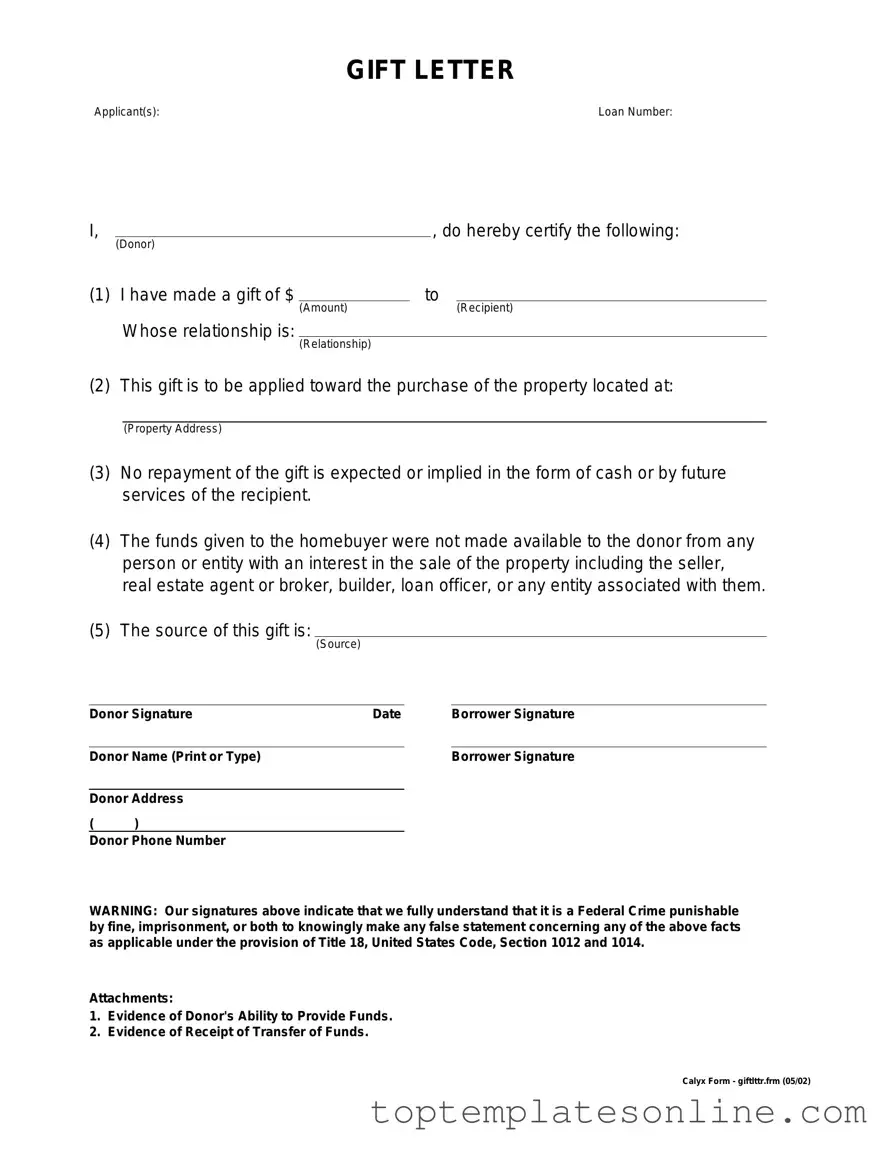When it comes to purchasing a home, financial assistance from family or friends can make a significant difference. The Gift Letter form serves as a crucial document in this process, providing a clear record of monetary gifts intended for the down payment or closing costs of a property. This form not only confirms that the funds are indeed a gift and not a loan, which could complicate mortgage approval, but it also outlines the relationship between the giver and the recipient. By including essential details such as the amount of the gift, the date it was given, and the donor's signature, the Gift Letter form helps to establish transparency in the transaction. Lenders often require this document to ensure compliance with their guidelines, making it a vital piece of paperwork in the home-buying journey. Understanding the importance of this form can empower both givers and recipients to navigate the financial aspects of homeownership with confidence.
